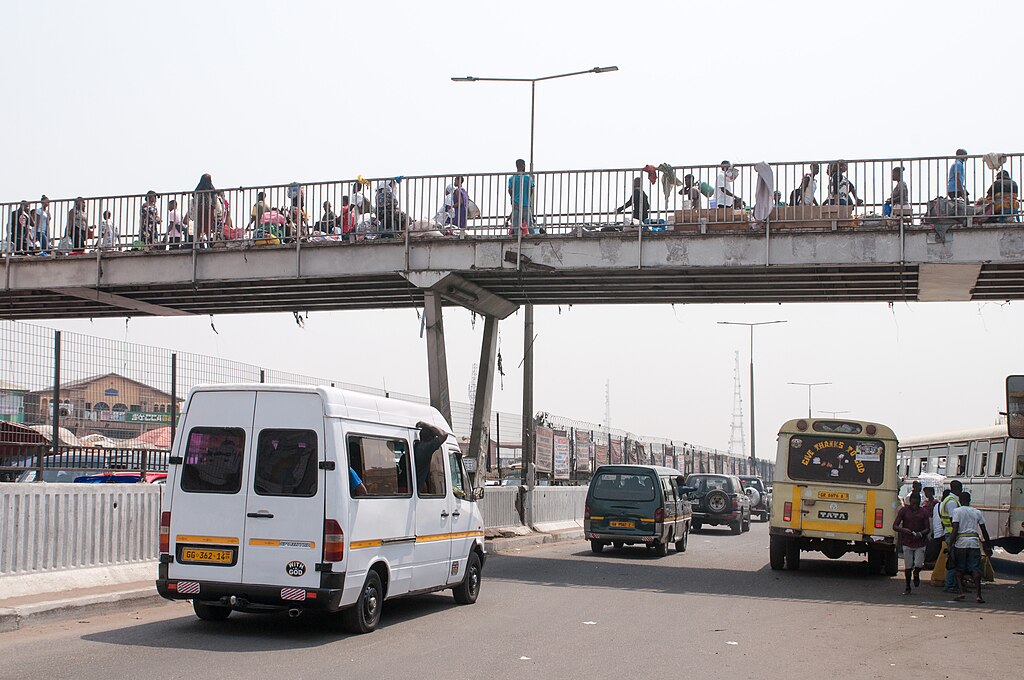Till Death Do Us Part – The Plight Of Pedestrians As Road Users

I had the opportunity to research the George Walker Bush (N1) Highway shortly after it was commissioned. One subject of interest was why pedestrians chose to abandon the overhead crossings and rather took the dangerous risk of crossing at unapproved points. Was it that the pedestrians cared little about their lives or that they felt their time was too valuable to waste having to go the extra mile to the nearest designated overhead crossing? Despite the high pedestrian knockdown and fatalities that frequently occurred, the jaywalkers were not deterred. The findings of my research indicated that the people felt the crossings were not responsive to their needs and, for that matter, were ill-sited. On the other hand, the technical men felt their interventions were in conformity with “international best practice”. The politicians, on the other hand, explained the inadequacy as a lack of funding. Reconciling these three views gives us the struggle of man-on-foot vs man-in-car. Who wins? The answer, I wish not to be the one to declare. Fast forward to today, 7 years since the highway was commissioned, it is disheartening to see how little has changed. Do we see similar situations happening in the urban space of Accra? Tune your ears to the airwaves, and the answers will be loud and clear. Roll back the years, and you will also find this same conflict occurred along the Kaneshie-Mallam Highway long before the George Walker Bush Highway was conceived.
Not far from the George Walker Bush (N1) Highway is the Madina-Adenta Highway, which has also been in the news recently due to high pedestrian fatalities. Sadly, unlike the overhead pedestrian crossings on the N1 which were completed, the crossings on the Madina-Adenta have been left uncompleted and abandoned for some years now. The situation leaves pedestrians with no option other than to cross at unsafe places. Einstein had a choice word to describe the act of doing the same thing and expecting different results, and that perhaps describes this situation.
Many a time we are tempted to blame the people. However, the various institutions whose mandate it is to ensure road safety and protect road users, especially pedestrians, are equally culpable. In my assessment the aforementioned issues stem from an institutional failure to promote people-centred development, as well as a failure to learn and be innovative. Till a drastic and painful situation occurs, blind eyes are turned to blatant hostilities impeding our enjoyment of the urban space.
The current urban challenge is not about what the people do; rather, it’s about a failure to consider the needs of the people and to plan with them. In this specific context, “Vox Populi, Vox Dei”, Latin for “the voice of the people is the voice of God”, has never been more meaningful than now. Roads being constructed for only vehicles without any consideration for other road users, especially pedestrians, is heinous. The cries of the people for safer means of crossing fell on deaf ears till death and grief separated loved ones. In some countries this could have qualified for criminal negligence. However, when the people decided to speak the language best understood to evoke an immediate response from the government, all hell broke loose.
How best can this be addressed? Moving forward, it is imperative that people be placed at the centre of any developmental intervention. An option to reduce illegal pedestrian crossing at grade would be the use of pedestrian underpasses for such highways at strategic locations with easy accessibility. Pedestrian accidents quite often are the result of complex circumstances and the reaction of a number of factors related to driver and pedestrian behaviour and road infrastructure. Location is very important, as pedestrians tend only to use crossing facilities located very near to where they want to cross the road. Since it is only through tightly controlled access that design is able to influence pedestrian crossing points, underpasses would help avoid interruption of traffic and allow pedestrians to arrive safely at their destinations. Underpasses are significantly less expensive when integrated into the road construction. Should this have been considered during the design of the Lapaz construction, it could have saved lots of lives. I have seen this option being used in some countries where, even due to the high pedestrian traffic, multipurpose functions have been derived through the addition of convenient shops for economic gains.
With underpasses being most suitable for new constructions, how do we go about ensuring people-centred development in other road projects? Firstly, in the case of the Madina-Adenta highway, it is important that the human facilities of the road be completed, especially in finishing the abandoned pedestrian crossings and the needed road furniture. Currently, on the N1, I see some incremental developments where provisions are being made for crossing at Lapaz. This is commendable, but that should not end there since there are several other areas that also require such assistance. Pedestrian crossings should not be afterthoughts but should be integral to design and construction.
Lastly, our drivers also need to appreciate they are not the only road users and must respect other users, including pedestrians and cyclists. More public education and sensitisation would be needed in this regard, as well as enforcement of road traffic regulations by the Motor Transport and Traffic Directorate (MTTD). About the Okada and motorcycle riders, I would reserve my comments for later.
Allowing death to do us part before we seriously consider making human-centred approaches a part of our infrastructural development would only come but late. Dreadfully, we never know who will be next. The time to act is now, for it can save lives and avert needless public protest. For all, let us keep demanding what is ours: the right to a safe city!
Kwame Boye Frimpong
Head, Metropolitan Governance and Local Economic Development
